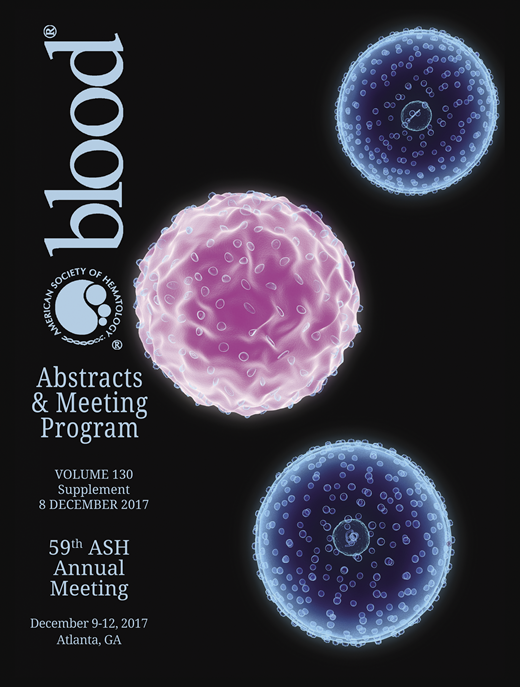Abstract
Background: Clonal hematopoiesis of indeterminate potential (CHIP) is defined by the presence of hematologic cancer associated mutations in the peripheral blood (PB) of at least 10% of elderly people without history of hematologic disorders (Genovese et al ., NEJM, 2014; Jaiswal et al ., NEJM, 2014). At present, caution is needed when predicting clinical consequences from CHIP in healthy people. An essential step towards a better understanding of CHIP requires identification of the cell of origin, clonal expansion patterns within the hematopoietic differentiation tree, and its dynamic behavior under stress scenarios (e.g. chemotherapy).
Methods: PB and bone marrow (BM) samples were collected from 437 donors ≥ 55 years without known hematologic disease including a sub-cohort of 72 patients with newly diagnosed non-hematologic cancer requiring chemotherapy.
Whole blood DNA was screened for CHIP with a 54 gene panel. A total of 63 PB and 9 BM samples were flow-sorted and variant allele frequencies (VAFs) were quantified in the hematopoietic fractions. In the cancer cohort, 32 clonal mutations were studied at 110 time points to investigate clonal dynamics under chemotherapy.
Results: We identified 168 confirmed variants in 121 patients. 34 patients (28.1%) had 2 or more mutations (Fig. 1A). Presence of ≥ 2 mutations was significantly associated with peripheral artery disease (P=.002), diabetes (P=.04), and hyperlipoproteinaemia (P= .047). The most frequent combination was DNMT3A / TET2 (n=10) followed by DNMT3A/DNMT3A and TET2/TET2 in four cases each. TET2 mutations were significantly associated with DNMT3A (P=.015) and ASXL1 (P=.046) (Fig. 1B).
Allelic burden of 91 mutations in 63 patients was determined in CD34+ progenitors, monocytes, granulocytes, NK-, B-, and T-cells (median VAFs: 5.1%, 7.1%, 6.3%, 6.0%, 1.9%, and 0.5%). B- and T-cells showed significantly lower VAFs when compared to WB or any other sorted cell fraction (P <.001 for each comparison). NK-cells showed significantly higher VAFs than T- and B-cells (P <.001), reaching comparable VAFs of myeloid cell fractions (Fig. 1C). Next, we compared mutation-specific effects on allelic burden within the cellular subfractions for DNMT3A, TET2, ASXL1, SF3B1, and TP53. No differences were observed except for a higher VAF in T-cells of DNMT3A -mutated individuals compared to other CHIP positive patients (P <.001), indicating an involvement of very early hematopoietic stem cells (HSCs).
Next, we tracked individual mutations in flow-sorted stem and precursor cells in the BM of 9 CHIP patients (example in Fig. 1D). In all cases, we were able to identify the mutation in the Lin-CD34+CD38- HSC fraction. Although mutations showed different expansion profiles [expansion ratio (ER)=VAF(monocytes)/VAF(HSCs) or ER=VAF(granulocytes)/VAF(HSCs)], the biggest expansion proportion always occurred in the stem cell compartment indicative for early clonal dominance.
In patients with more than one clonal mutation, the repartition of patient specific mutations showed similar patterns in most cases, suggesting that mutations were acquired within one clone. However, in some cases differential outgrowth of mutations was observed, indicating oligoclonality (examples in Fig. 1E).
In the cancer cohort, CHIP was significantly associated with chemotherapy dose reduction due to hematotoxicity (P=.028). When following 32 mutations at 110 time points, we observed 3 different patterns of VAF dynamics: 1) increasing, 2) decreasing, and 3) no major changes (example for each in Fig. 1F). We categorized the 3 groups by defining a VAF change of at least +/- 50 % in ≥ 2 time points as cut-off. Only one of the 13 DNMT3A mutations showed VAF dynamics (1/13=7.7%), in the remaining 19 clonal mutations other than DNMT3A, VAF dynamics were observed in 13 clones (68.4% vs. 7.7%; P <.001). When excluding the 7 solely DNMT3A- mutated cases, we observed significantly lower hemoglobin levels prior to cycles 5 and 7 (P=.049 and P=.02) and an elevated red cell transfusion necessity (P=.013).
Conclusion: CHIP derives from somatic mutations in Lin-CD34+CD38- HSCs and leads to preferential expansion in myeloid and NK-cell fractions. Clonal dynamics during chemotherapy lead to higher rates of red blood cell transfusions and dose reductions. Larger prospective studies in homogenously treated cancer patients are now warranted to verify the impact of CHIP during chemotherapy applications.
No relevant conflicts of interest to declare.
Author notes
Asterisk with author names denotes non-ASH members.


